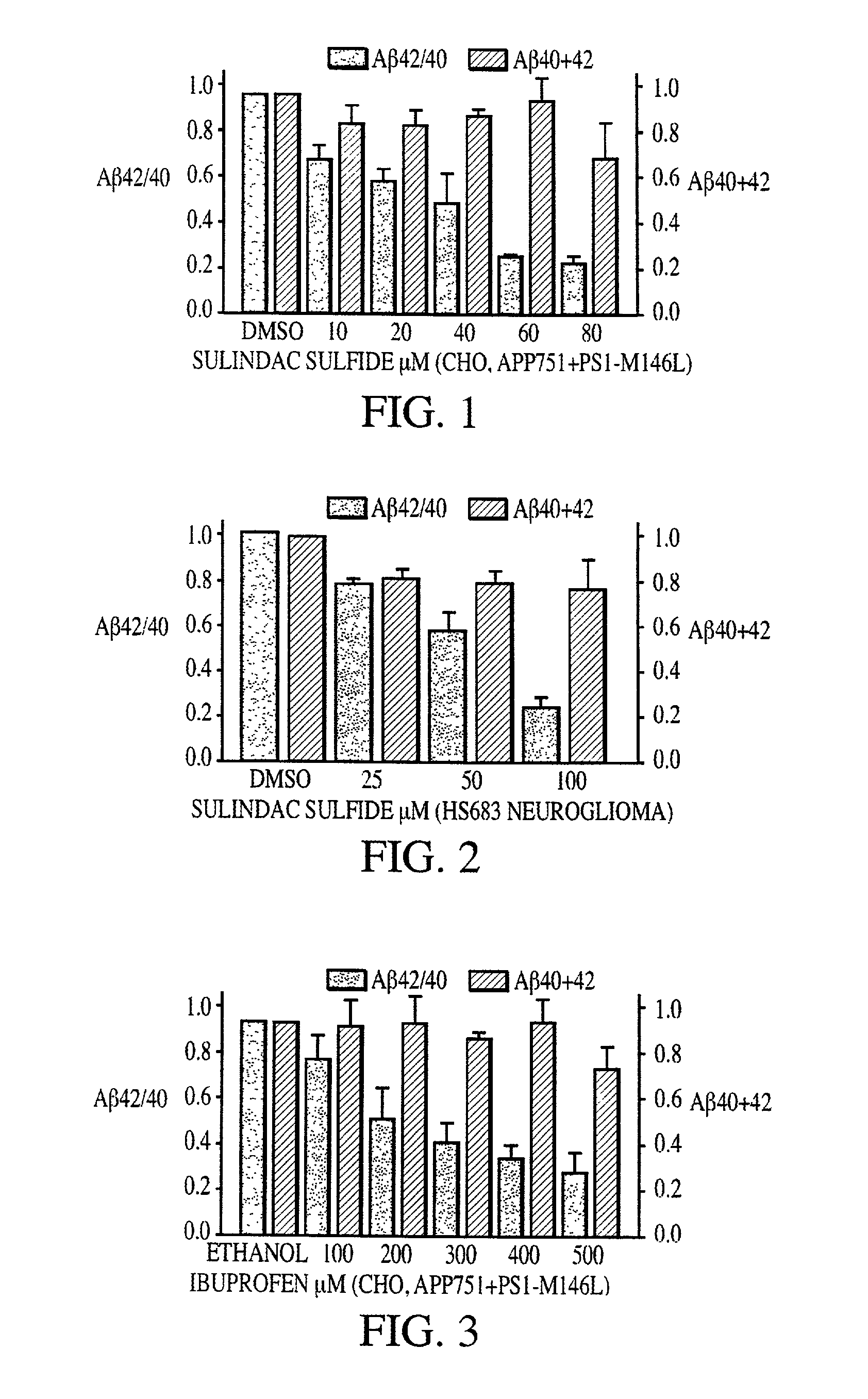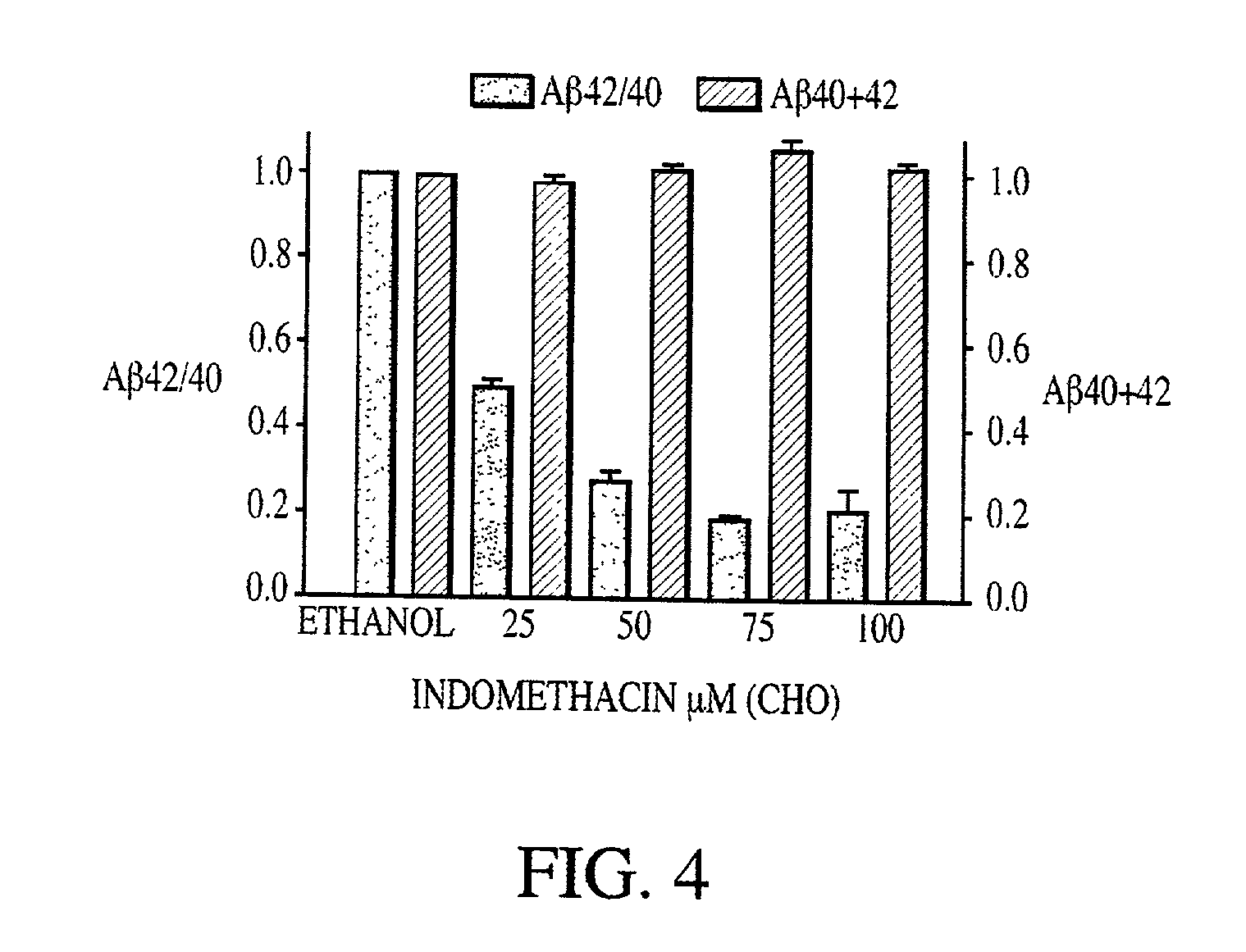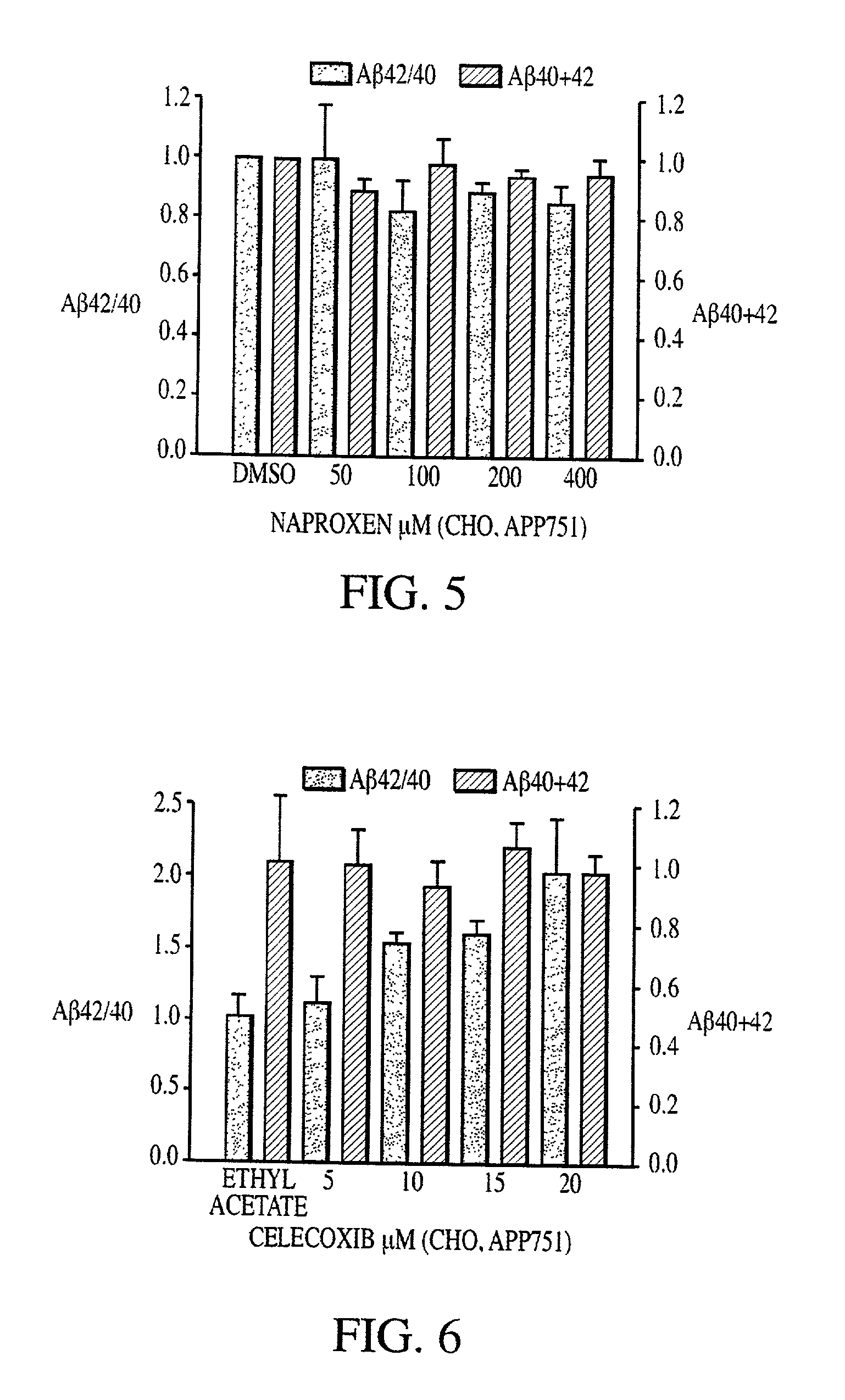Abeta 42 lowering agents
a technology of lowering agent and beta-beta, which is applied in the direction of ester active ingredients, drug compositions, biological materials analysis, etc., can solve the problems of slowing no convincing evidence from randomized clinical trials, indirect experimental support for these treatment methods, etc., to prevent, delay or reverse the progression of ad, reduce the level of pathogenic a.beta, and increase the level of a.beta
- Summary
- Abstract
- Description
- Claims
- Application Information
AI Technical Summary
Benefits of technology
Problems solved by technology
Method used
Image
Examples
example 1
Cell Cultures, Drug Treatments, and Cell Toxicity Analysis
[0085] Cell cultures were maintained in standard cell culture media supplemented with 10% fetal bovine serum and 100 U / mL penicillin / streptomycin (Life Technologies Inc., Germany). Cell cultures consisted of the following: Chinese hamster ovary (CHO) cells that expressed human APP751 from a vector containing a gene encoding APP751; CHO cells that expressed both human APP751 and human mutant PS-1 (M146L) from vectors containing genes encoding APP751 and mutant PS-1 (M146L); CHO cells that expressed human mutant APP751 (V717F) from a vector containing a gene encoding mutant APP751 (V717F); human neuroglioma cells HS683 that expressed human wild type APP695 from a vector containing a gene encoding wild type APP695; HEK 293 cells that expressed human wild type APP695 from a vector containing a gene encoding wild type APP695; and embryonic fibroblasts (that had immortalized spontaneously) from COX-1 and COX-2 double-knockout mice....
example 2
Antibodies
[0088] Antibodies used included the following: 5A3 and 1 G7, two monoclonal antibodies that recognized non-overlapping epitopes between residues 380-665 of APP; CT15, a polyclonal antibody that recognized the C-terminal fifteen amino acid residues of APP; 26D6, a monoclonal antibody that recognized amino acid residues 1-12 of the A.beta. sequence; 9E10, a monoclonal antibody that recognized the myc-epitope sequence; anti-COX-2 antibody, a monoclonal antibody that recognized COX-2; and M-20, a polyclonal antibody that recognized COX-1. The antibodies 5A3, 1G7, CT15, and 26D6 were described by Koo et al. (1996) J Cell Sci 109:991-8; Sisodia et al. (1993) J Neurosci 13:3136-42; and Lu et al. (2000) Nat Med 6:397-404. The monoclonal antibody 9E10 was purchased from Calbiochem-Novobiochem, CA, USA. The monoclonal anti-COX-2 antibody was purchased from BD Transduction Laboratories, CA, USA. The polyclonal antibody M-20 was purchased from Santa Cruz Biotechnology, CA, USA.
example 3
ELISA
[0089] A.beta. was detected by sandwich enzyme-linked immunosorbent assay (ELISA) as described by Murphy et al. (2000) J Biol Chem 275:26277-84. Following NSAID treatment, culture supernatants were collected, and cell debris was removed by centrifugation. Complete protease inhibitor cocktail (Roche Molecular Biochemicals, IN, USA) was added to the media and A.beta..sub.40 and A.beta..sub.42 levels were quantified using end-specific A.beta. ELISAs. All measurements were performed in duplicate.
PUM
| Property | Measurement | Unit |
|---|---|---|
| Molar density | aaaaa | aaaaa |
| Molar density | aaaaa | aaaaa |
| Molar density | aaaaa | aaaaa |
Abstract
Description
Claims
Application Information
 Login to View More
Login to View More - R&D
- Intellectual Property
- Life Sciences
- Materials
- Tech Scout
- Unparalleled Data Quality
- Higher Quality Content
- 60% Fewer Hallucinations
Browse by: Latest US Patents, China's latest patents, Technical Efficacy Thesaurus, Application Domain, Technology Topic, Popular Technical Reports.
© 2025 PatSnap. All rights reserved.Legal|Privacy policy|Modern Slavery Act Transparency Statement|Sitemap|About US| Contact US: help@patsnap.com



